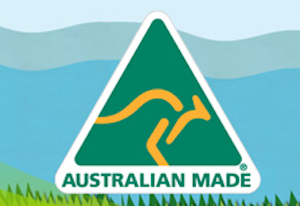Results of a recent study commissioned by the Australian Made Campaign found that buying Australian-made products has become more important for Australian consumers.
In a feature on OpenForum.com.au, Ian Harrison, Chief Executive of the Australian Made Campaign says Australians are becoming more aware of the importance and benefits of sustainable living, which also includes sustainable purchasing.
“Buying local is important for a number of reasons, not least of which is the positive impact on the environment by way of a reduction in food mileage,” says Mr. Harrison.
“One of Australia’s great strengths is the stringent standards that our manufacturers, producers and processors must comply with to legally sell their products here. Australia has some of the strictest regulations in the world, so when you purchase products made and grown in Australia you can be sure it has been manufactured and grown in accordance with high quality, health and safety regulations.”
Harrison says the easiest way to identify local products is to look for the green-and-gold Australian Made, Australian Grown logo which could have one of any five descriptors.
When the logo says Australian Made, it means 50% or more of the cost of the product was incurred in Australia. It could be that the product was substantially transformed in Australia, for instance, the final manufacturing process was done here.
If the logo says Product of Australia, it means all the significant ingredients came from Australia and nearly all of the manufacturing or processing was done here.
For a product to be categorized as Australian Grown, the significant ingredients should have been grown in Australia, and nearly all the processing was carried out in the country as well.
“Where a product contains some (but not much) imported component, a qualified claim is available. The AMAG Code of Practice sets out stringent conditions for use of the qualified claim, to ensure that the product is almost entirely Australian,” says Mr. Harrison.
Australian Seafood means the product’s significant ingredients were grown or harvested in Australia and nearly all of the processing was done in Australia as well.
Finally, a logo which is labelled Australian is only used for export markets and the product must meet the criteria for at least one of the four other claims, without being misleading.
The AMAG logo is the only registered certification trade mark for Australian country-of-origin claims.
According to Australian Made, research by Roy Morgan in 2012 has shown that 88% of Australian consumers express strong confidence that a product is truly Australian when they see the AMAG logo. More than 1,800 companies use the logo on more than 10,000 Aussie products sold in the domestic markets and abroad.





















